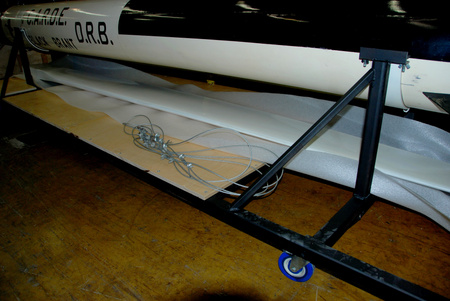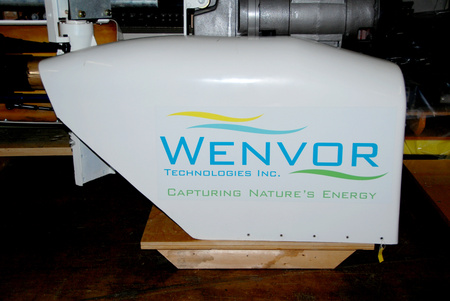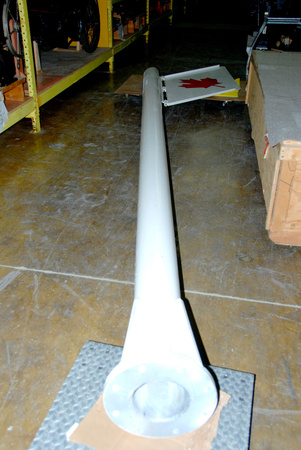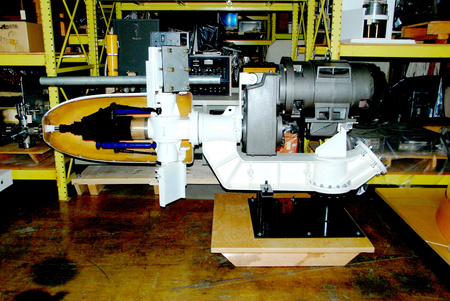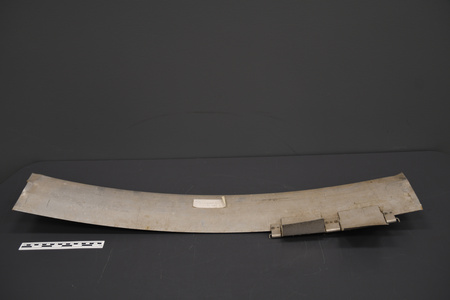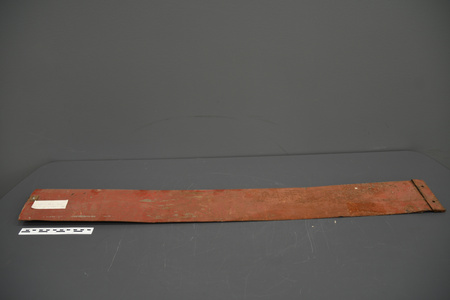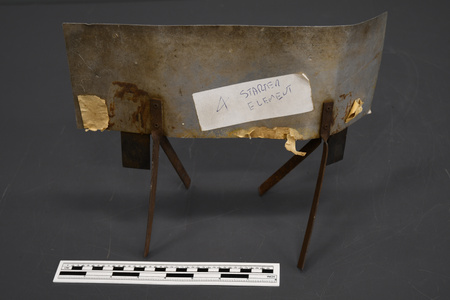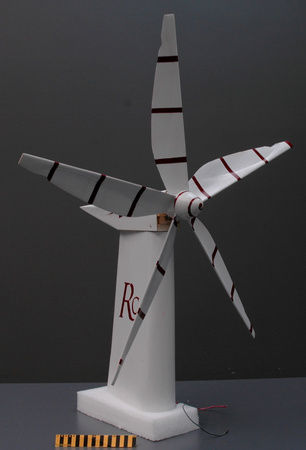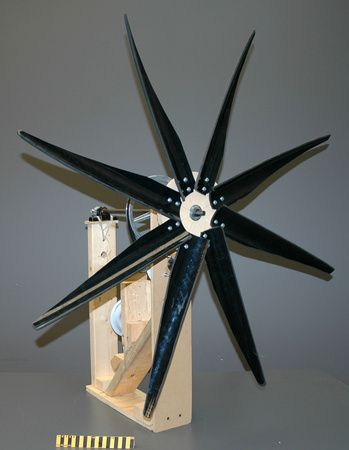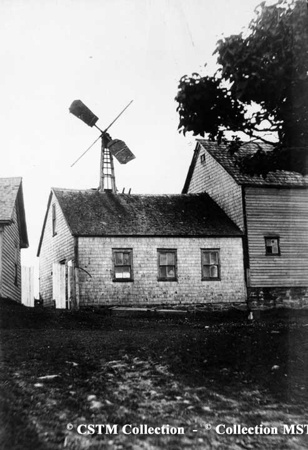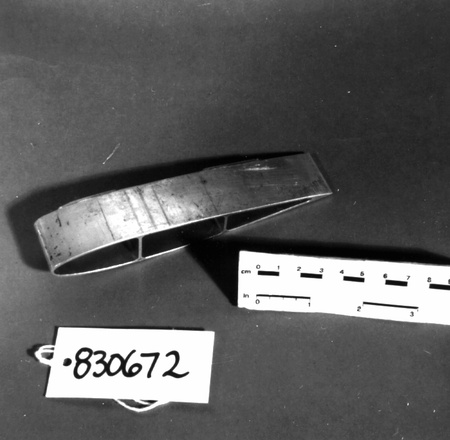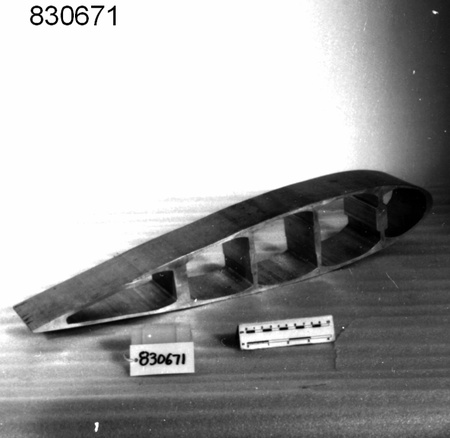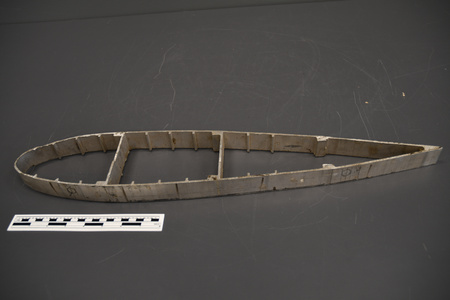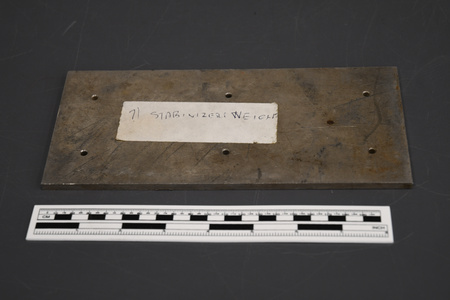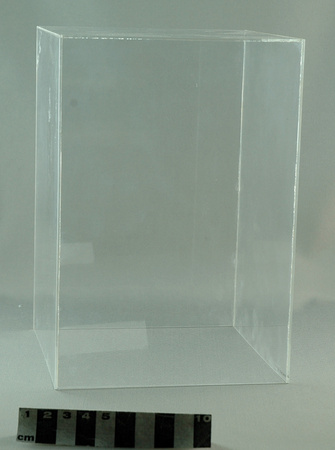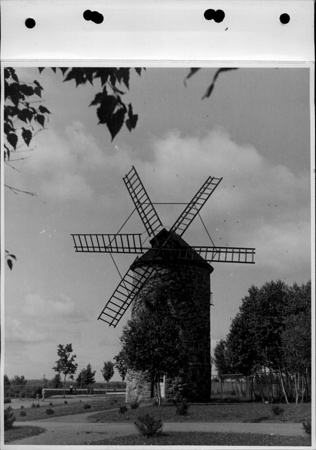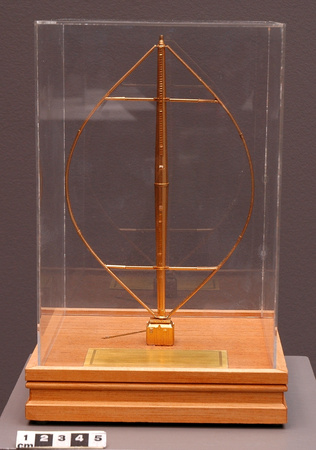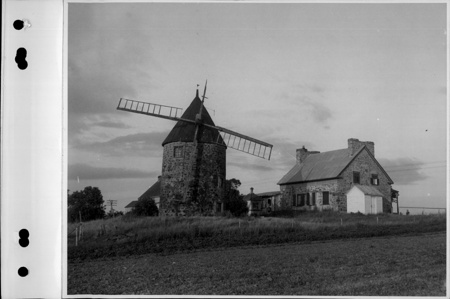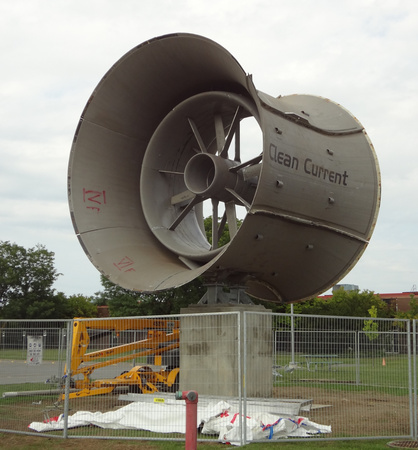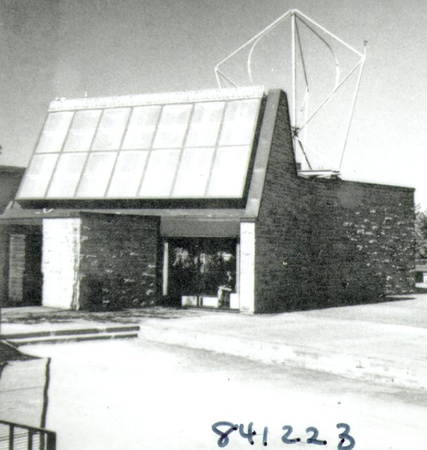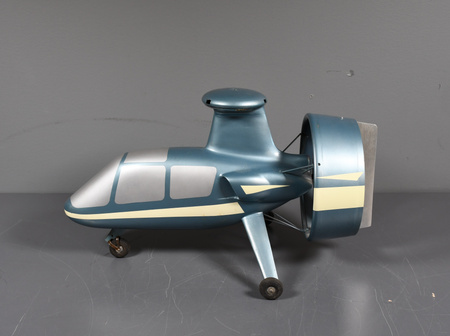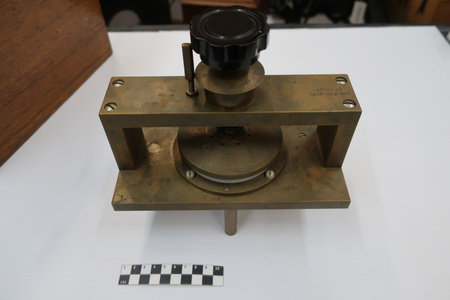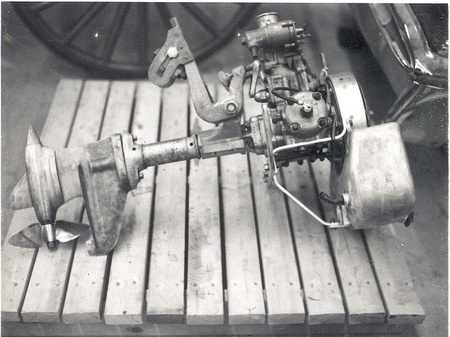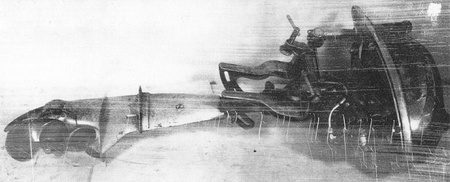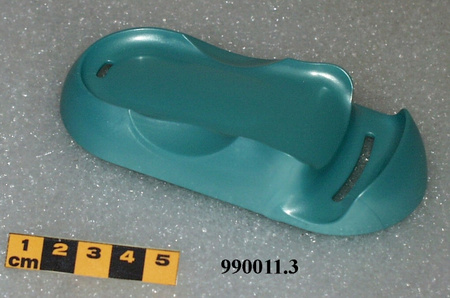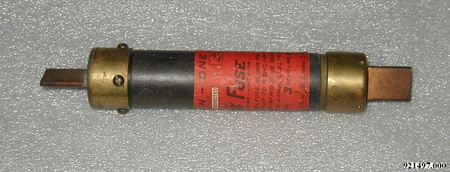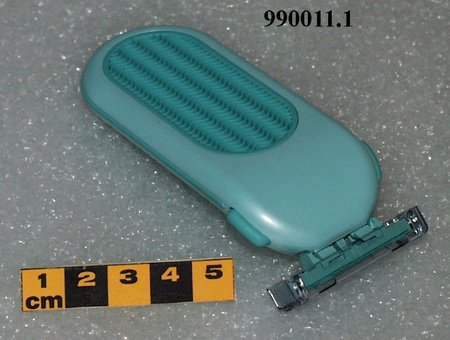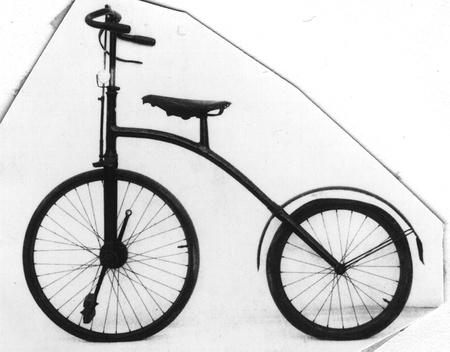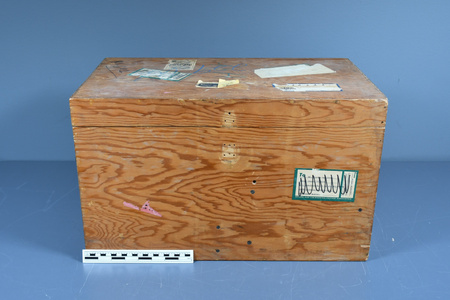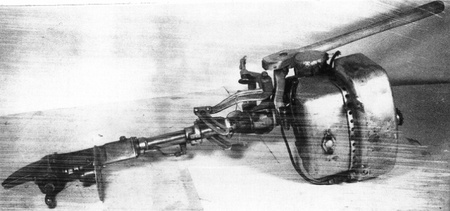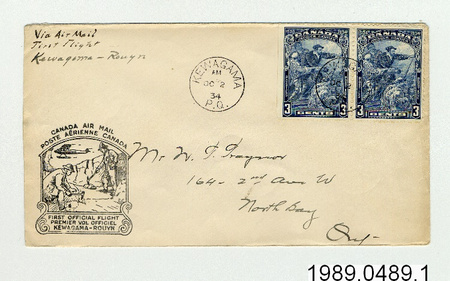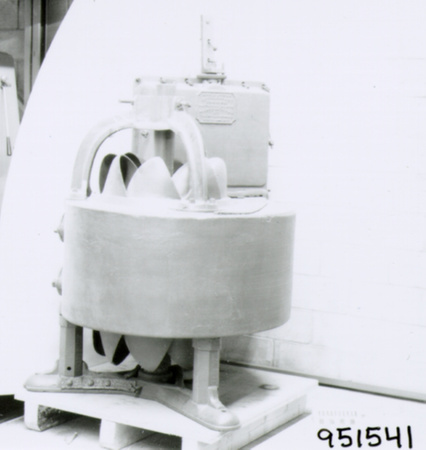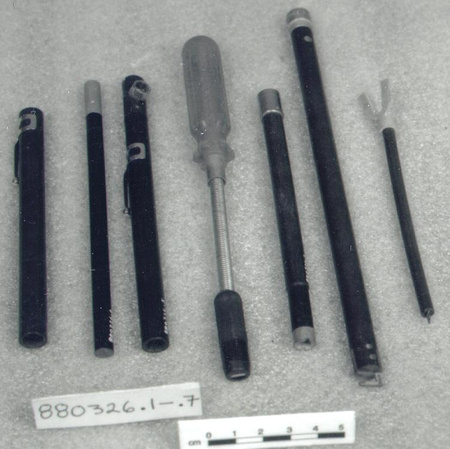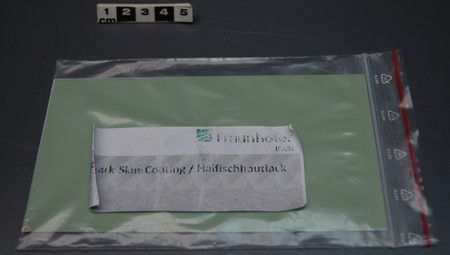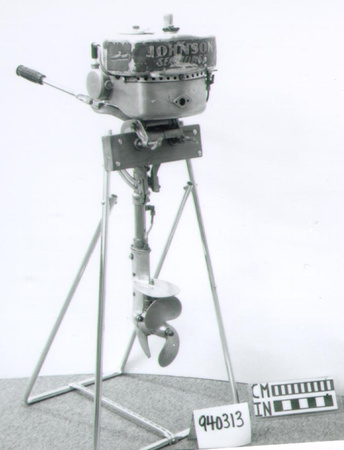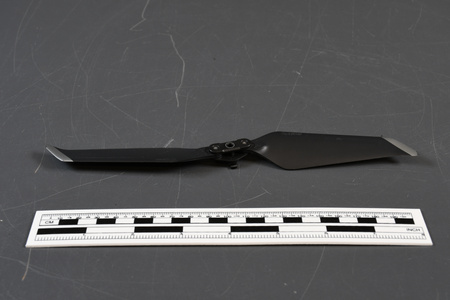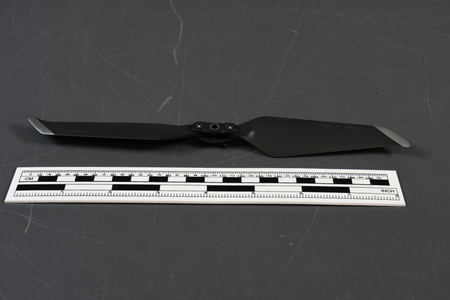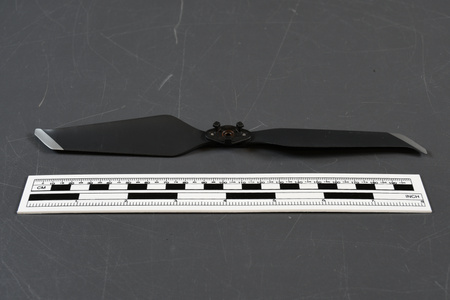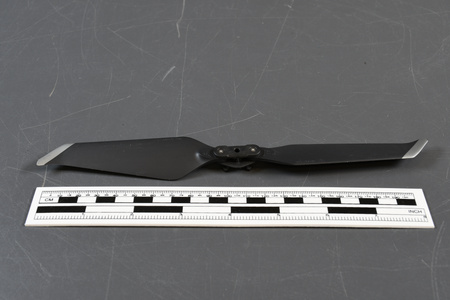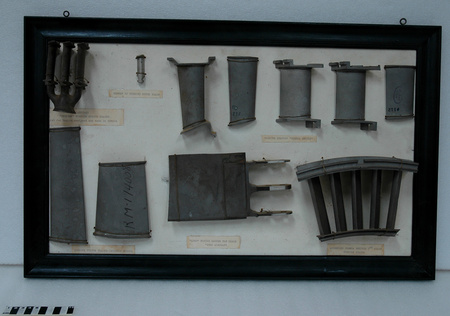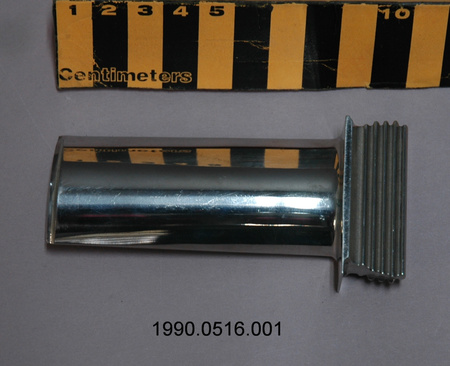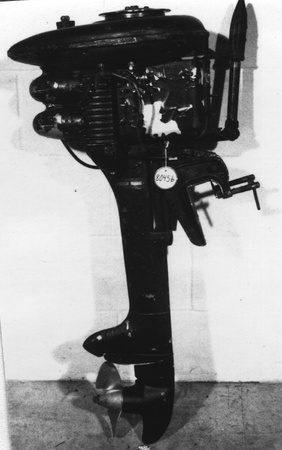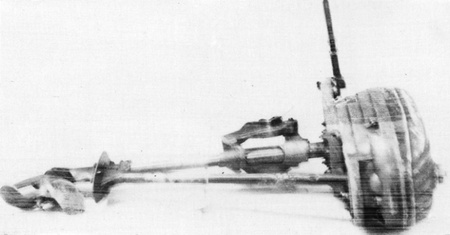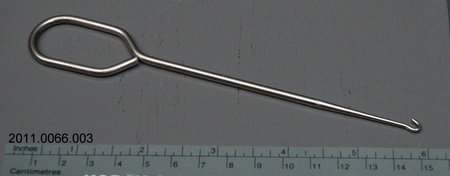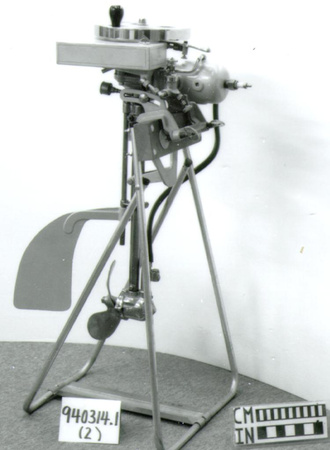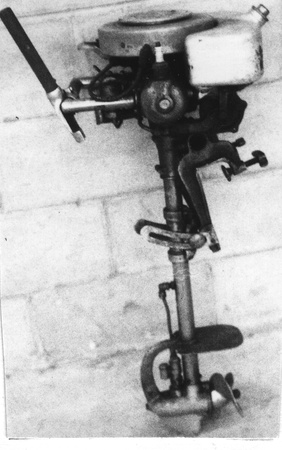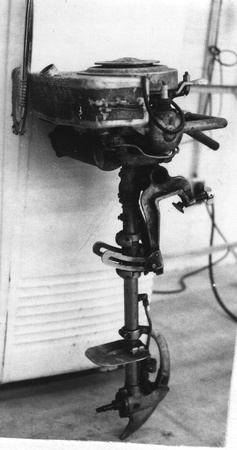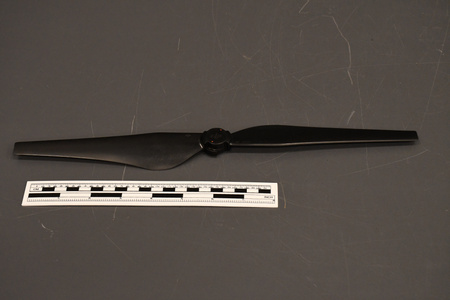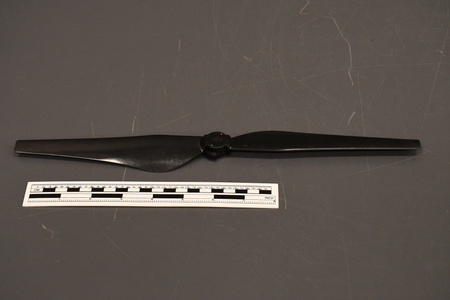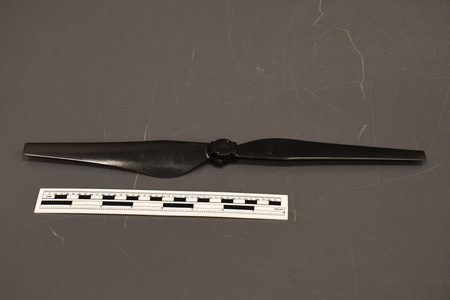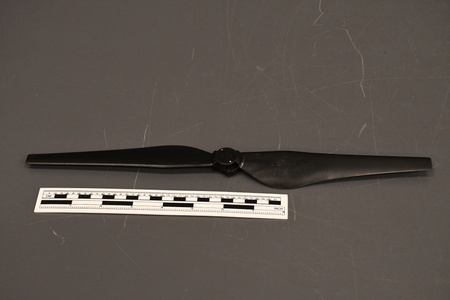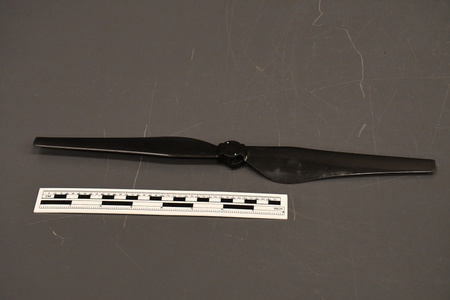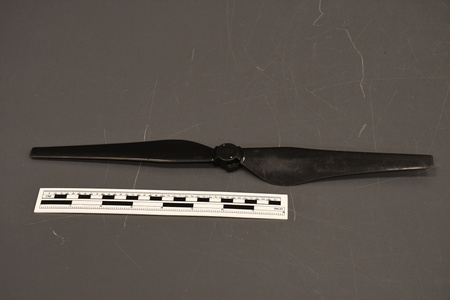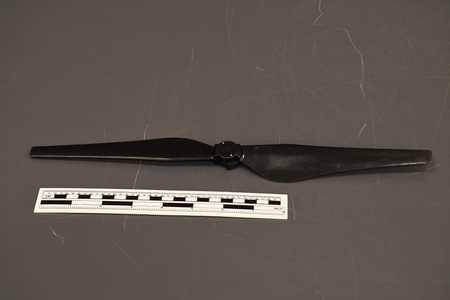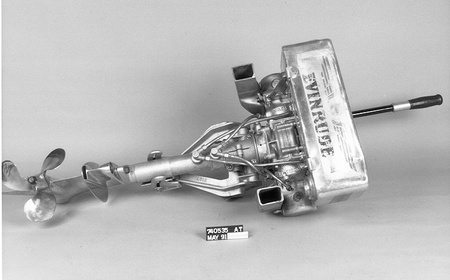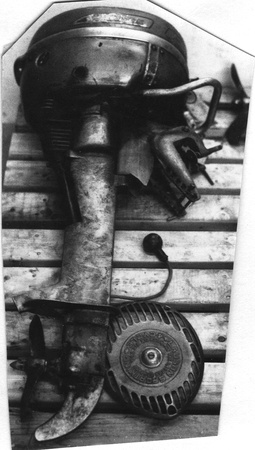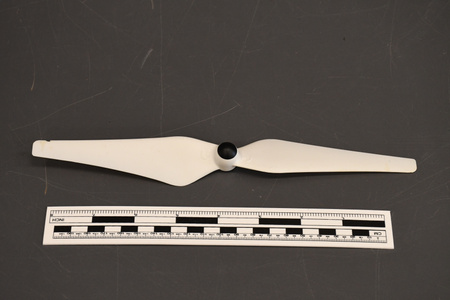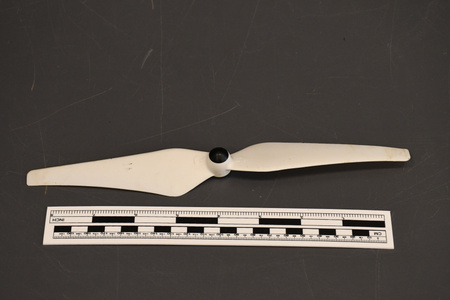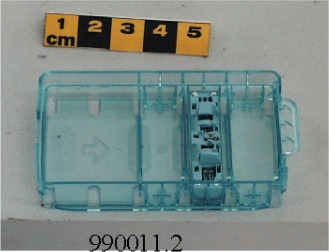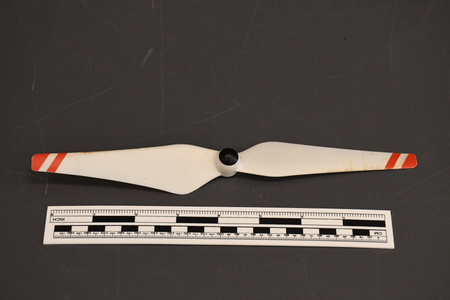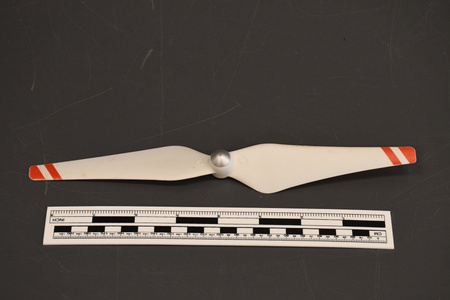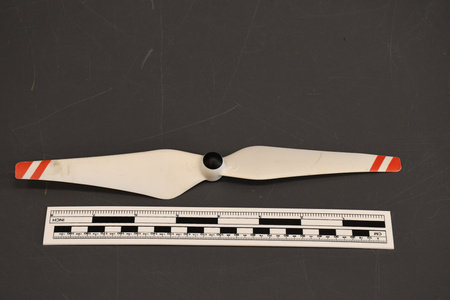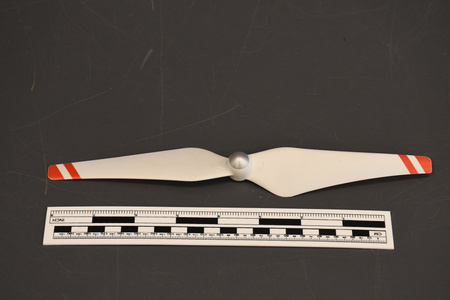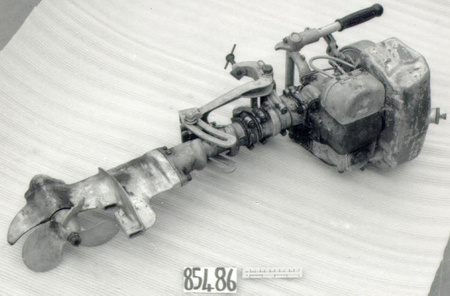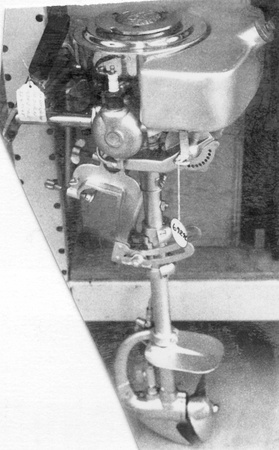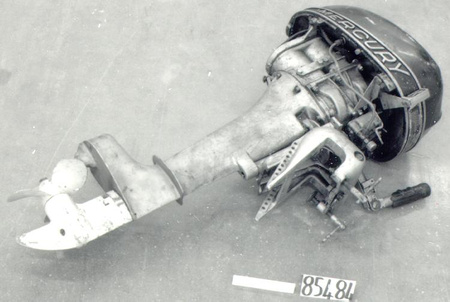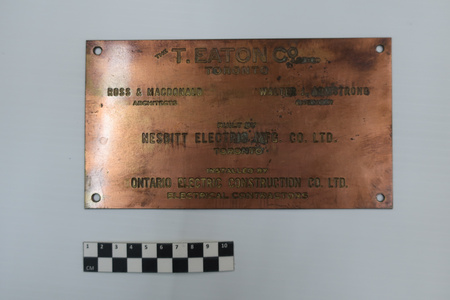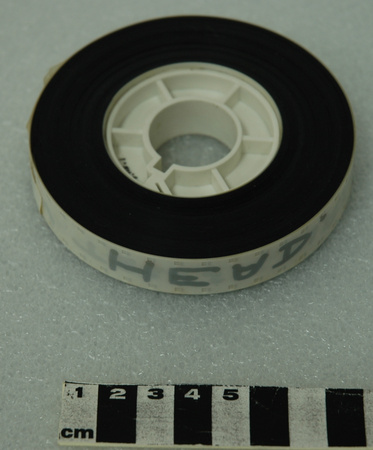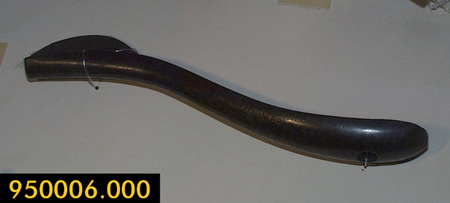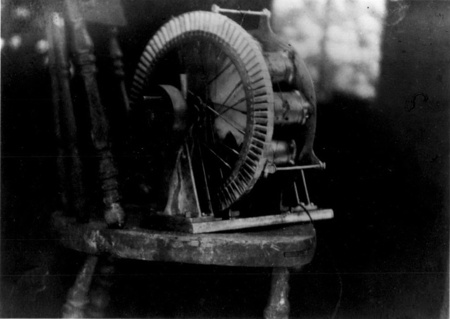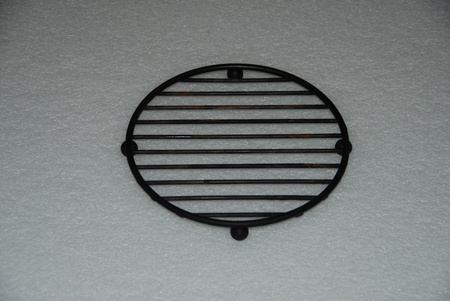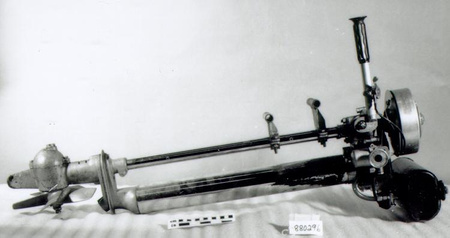Blade, wind turbine
Use this image
Can I reuse this image without permission? Yes
Object images on the Ingenium Collection’s portal have the following Creative Commons license:
Copyright Ingenium / CC BY-NC-ND (Attribution-NonCommercial 4.0 International (CC BY-NC 4.0)
ATTRIBUTE THIS IMAGE
Ingenium,
2011.0289.001
Permalink:
Ingenium is releasing this image under the Creative Commons licensing framework, and encourages downloading and reuse for non-commercial purposes. Please acknowledge Ingenium and cite the artifact number.
DOWNLOAD IMAGEPURCHASE THIS IMAGE
This image is free for non-commercial use.
For commercial use, please consult our Reproduction Fees and contact us to purchase the image.
- OBJECT TYPE
- Horizontal Axis Wind Turbine
- DATE
- 1993
- ARTIFACT NUMBER
- 2011.0289.001
- MANUFACTURER
- Unknown
- MODEL
- Farwind
- LOCATION
- Unknown
More Information
General Information
- Serial #
- N/A
- Part Number
- 1
- Total Parts
- 1
- AKA
- N/A
- Patents
- N/A
- General Description
- Large wind turbine blade.
Dimensions
Note: These reflect the general size for storage and are not necessarily representative of the object's true dimensions.
- Length
- 4.7 m
- Width
- 30.0 cm
- Height
- 8.9 cm
- Thickness
- N/A
- Weight
- N/A
- Diameter
- N/A
- Volume
- N/A
Lexicon
- Group
- Energy-electric
- Category
- Generation
- Sub-Category
- N/A
Manufacturer
- AKA
- Unknown
- Country
- Unknown
- State/Province
- Unknown
- City
- Unknown
Context
- Country
- Canada
- State/Province
- Ontario
- Period
- 1993 to 1996.
- Canada
-
Wenvor Technologies Inc. received this blade from Vergnet SA in 1995. This was the first generation of blades made by the French company. Wenvor tested the blade on their turbine for several months. It was very inefficient and very difficult to mount and align in the blade spindle. The four anchoring bolts were not sufficient to clamp the blade properly and it split at the root during service. Following the tests, Al Paulissen and Randy Seager from Wenvor developed their own fiberglass blade, with a proper airfoil that provided better lift and more torque. The blade was mounted very securely in a blade spindle and the assembly was self aligning. The next generation of the blades was made with a carbon composite. Wenvor Technologies Inc. was created by Al Paulissen and Randy Seager in 1992 to explore solar energy technologies. In 1995, Al and Randy designed their first wind turbine and started testing the French blade. Their first turbine was installed at the Wind Energy Institute in PEI in 1996. The company now specializes in 30kW turbines for rural\cottage customers. La compagnie Wenvor Technologies Inc a reçue cette pale éolienne de Vergnet en 1995. Cette pale est considérée comme étant un produit de première génération fabriquée par la compagnie française. Wenvor a testé la pale pendant quelques mois avec leur turbine. La pale était inefficace et difficile de monter et aligner sur l’axe. Les quatre boulons d’encrage n’étaient pas suffisants pour sécuriser la pale et elle a été fendue. Après quelques tests, Al Paulissen et Randy Seager de Wenvor a développé leur propre pale en fibre de verre avec un meilleur profil aérodynamique qui résulte en meilleure ascension et plus de torque. Cette pale était montée de façon plus sécuritaire dans son axe. La prochaine génération de pale était fabriquée à partir de composite de carbone. La compagnie Wenvor Technologies Inc. a été créé en 1992 par Paulissen et Seager pour explorer les technologies d’énergie solaire. En 1995, ils ont conçu leur première éolienne et ont commencés des tests sur la pale française. Leur première éolienne était installé à l’Institut de l’Énergie Éolienne du Canada à l’Île-du-Prince-Édouard en 1996. La compagnie spécialise présentement avec les éoliennes 30KW pour la clientèle rurale et de chalet. - Function
-
To capture wind energy and turn the shaft in a wind turbine. Pour but de capturer l'énergie éolienne et alimente le multiplicateur de l'éolienne. - Technical
-
Canadian researchers focused primarily on developing VAWTs. During the 1970s and until 1984, Canada led the R&D in this area and was recognized as a global expert on VAWTs. HAWTs used in Canada were a technology transfer from Europe. When they ventured into the wind research, Al and Randy decided to test European technologies rather than develop their own design. They chose the French blade because Vergnet rural market was close to the Wenvor’s target market. French technology did not work in Canadian conditions and Wenvor decided to proceed with their own design. Vergnet claims to be the only French manufacturer of wind turbines. The company started in rural hydraulics and in the early 1990s moved to design small wind turbines. The first wind turbine was produced in 1993, and by 2011, Vergnet sold over 700 turbines. The company now produces turbines rated at between 200 kW to 1 MW Les chercheurs canadiens avaient l’inclination de souligner le développement des éoliennes à axe vertical. Pendant les années 1970 jusqu’en 1984, le Canada était à l’avant-plan de la recherche et du développement de ce marché et était reconnu comme un expert global sur ce type d’éolienne. Les éoliennes à axe horizontal utilisé au Canada était un transfert de technologie venant de l’Europe. Lorsqu’ils ont exploré la recherche éolienne, Al et Randy ont décidés de tester les technologies Européennes au lieu de concevoir leurs propres modèles. Ils ont choisi la pale française étant donné que le marché rural de Vergnet était similaire au marché cible de Wenvor. La technologie française n’a pas bien fonctionné dans les conditions canadiennes et Wenvor a donc décidé de commencer leurs propres modèles. Vergnet affirme qu’ils sont les seuls manufacturiers d’éoliennes français. La compagnie a commencé dans les hydrauliques ruraux et au début des années 1990s ils ont commencés à construire de petites éoliennes. La première éolienne a été produit en 1993 et par 2011 Vergnet a vendu au-dessus de 700 turbines. La compagnie produit des turbines gradé entre 200kW et 1MW. - Area Notes
-
Unknown
Details
- Markings
- N/A
- Missing
- Appears complete.
- Finish
- Large wind turbine made primarily from wood. Blade has white paint on its surface. One side of the blade has a yellow streak of paint along the edge of the blade. There is split wood at one end of the blade. Large pale éolienne fabriquée principalement en bois. La surface de la pale est peinturée en blanc. Un côté de la pale a une ligne de peinture jaune sur le rebord de la pale. Le bois est fendu à une extrémité de la pale.
- Decoration
- N/A
CITE THIS OBJECT
If you choose to share our information about this collection object, please cite:
Unknown Manufacturer, Blade, wind turbine, circa 1993, Artifact no. 2011.0289, Ingenium – Canada’s Museums of Science and Innovation, http://collection.ingenium.ca/en/id/2011.0289.001/
FEEDBACK
Submit a question or comment about this artifact.
More Like This
